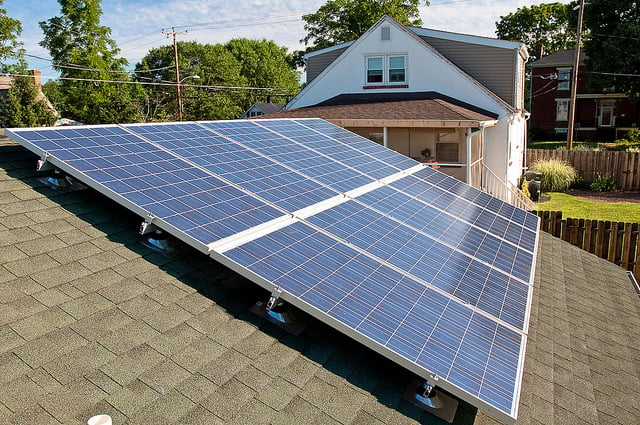
One of the original furnaces, the Franklin Stove, was invented for energy-efficiency. Benjamin Franklin, who knew a little something about both heat transfer and electricity, realized that by replacing a wall fireplace with a cast-iron furnace in the middle of the room, heat could be more efficiently distributed throughout a room. It was a revolution, but a flawed one. Without a chimney to circulate airflow, the furnace couldn’t sustain its heat source for long. Another Philadelphia local, David Rittenhouse, later added the flue that perfected this early residential furnace.
Today, home furnaces and residential heating are at a unique parallel to the time of Benjamin Franklin. With a handful of imperfect heating technologies and a world hitting critically low levels of combustible fuels, the need for a breakthrough in energy-efficient heating has arguably never been greater. Whether directly or indirectly, virtually all future-generation home furnaces will use the sun to heat (and cool) the home. Here are three of the leading candidates for the furnace of our children and of our children’s children.
1. Solar Panels
Solar panels use photovoltaic cells to convert sunlight directly into electricity. To effectively use this technology, a south-facing roof must have a properly designed pitch so the photovoltaic cells can collect solar energy. Although traditional furnaces and hybrid heating systems are still cheaper for most homes in terms of cost-per-watt, government subsidies and eco-friendly homeowners have led to the first big explosion in solar panels.
In terms of installation costs, however, solar panels are still a stretch. A small home in a sunny climate like Colorado or west Texas might need only $25,000-$35,000 to power a home. A larger home in a cloudy climate might run as much as $75,000. In many places, utilities companies and government subsidies may provide for as much as half this cost, but it will still take many, many years (if ever) to recoup the initial cost of installation.
The Big Problem
While a handful of new “third-generation” photovoltaic cells are being perfected, including polymer cells, tandem cells, and quantum dot technology, they still have a long way to go. In fact, these new technologies probably hold greater potential for solar-powered cars, computers, and electronic devices than they do for home heating.
Possible Solutions
Along with better photovoltaic cells, batteries that more effectively store electricity would help bridge energy loss during the nightfall. This might help reduce the cost-per-watt of solar panels as much as better photovoltaic technology.
2. Solar Furnaces
Solar furnaces are essentially a glorified version of using a magnifying glass to concentrate sunlight on a single point to generate intense heat. Highly reflective, parabolic mirrors are used to create temperatures up to 1000 degrees Farenheit for standard furnaces with the largest solar furnace hitting 3000 degrees Farenheit. This heat can then be used as an energy source for any number of applications. Ironically, solar panels work better in the traditional role of the residential furnace, and solar furnaces work better for residential cooking.
The cost for solar furnaces is even less tangible than the convoluted but real estimates of solar panels. Your local hardware can create a crude solar furnace for as little as $5 or $10; commercial solar furnaces can cost millions of dollars. Besides solar cookers that don’t allow for the nuanced cooking of conventional ranges, few residential applications exist between these extremes.
The Big Problem
Between the manufacturing cost of high-performance parabolic mirrors and the difficulty in efficiently using the heat to power a turbine generator, there are no good answers yet for wide-scale, residential use of solar furnaces.
Possible Solutions
The most promising answer lies with improving the conversion of heat to electricity through steam turbines. The National Renewable Energy Laboratory NREL has estimated that solar furnaces might produce electricity for 5.47 cents per kWh by 2020. (Solar furnaces are also being used to create hydrogen fuel, another promising energy source.)
Ready to start your Heating System?
Find Pros3. Geothermal Heating Systems
The most efficient source of solar energy doesn’t come from the sky, but from beneath your home. About half of the sun’s energy is absorbed into the ground, creating a constant, comfortable temperature that can be transferred from the ground into your home. Unless there is a major breakthrough in solar heating, geothermal heating and cooling has a significantly brighter future than its solar-based competition. For new housing construction, geothermal systems are probably today’s most underused energy-efficient technology, though this is rapidly changing. HomeAdvisor has seen geothermal installation increase and this trend doesn’t even reflect many of the geothermal systems installed for newly built homes.
The Big Problem
While retrofitting a home with a geothermal heating system can still be a wise choice in some situations, the cost of installation is the biggest problem with these systems. The average geothermal system costs only about $7,500, but excavation of the land beneath your home will typically add another $10,000-$30,000 to the final price tag.
Possible Solutions
Although the nuts-and-bolts of these systems get minor improvements each year, the real solution that is needed for these systems is an Armageddon-like digging system. Perfecting the ability to dig will allow single, vertical loop systems to become more cost-effective and reduce the land use associated with horizontal systems.
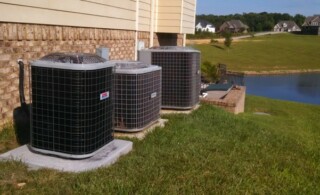 Environmental Heating and Cooling Ideas
Environmental Heating and Cooling Ideas 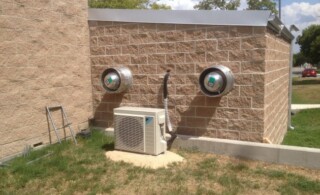 A Geothermal Heat Pump Lets Earth Do the Work
A Geothermal Heat Pump Lets Earth Do the Work 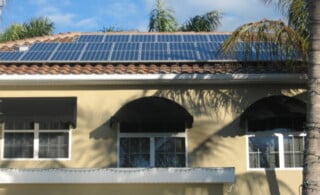 Solar Heating – About Passive & Active Systems
Solar Heating – About Passive & Active Systems 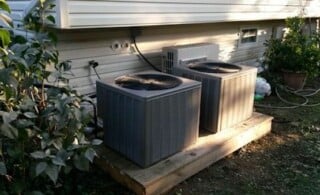 Green Air Conditioning
Green Air Conditioning 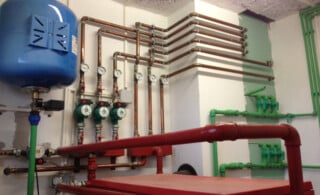 Choosing Green: Boilers and Radiator Heating Systems
Choosing Green: Boilers and Radiator Heating Systems 

Other future options are
Fuel Cell Furnaces. This uses electricity and water to produce heat and power from the same boiler. The advantage is that fuel cell energy conversion is very efficient. Check out Ceres Power.
Solar Water heating combined with a booster so the water is preheated by solar and then boosted by a low energy accelerator
Micro Wind+Solar – Solar and a small wind turbine
Micro Biomass CHP so in goes the “all” household waste and out comes syngas for heat and electricity plus high grade manure for the household garden farm